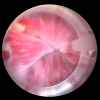Introduction
Transurethral injection of bulking agent is a treatment option for female stress urinary incontinence (SUI). This is characterized by loss of urine during physical exertion such as coughing, laughing, or exercising. It is not so effective in men with SUI.
This involves the injection of bulking agents into the urethra, creating wall-to-wall apposition and hence increasing the outlet resistance. Examples of agents that can be used are Collagen (now no longer manufactured), Macroplastique (silicon particles in a viscous gel) and Bulkamid (hydrogel with synthetic polymer).
It is considered a safe and minimally invasive procedure, but the trade-off is that the success rates are lower at 30 - 50% and the procedure may need to be repeated.
Indications
Suitable for milder forms of stress urinary incontinence.
It can potentially be done under local anaesthesia and hence is suitable for frail, elderly patients.
Some younger patients with mild incontinence who want the least invasive treatment, may also prefer this.
Preoperative Instructions
If you are taking blood thinners or certain newer diabetic medications, please inform your doctor as these may have to be stopped before the surgery.
If you are having a general anaesthetic or IV sedation, you will need to fast for at least 6 hours before the surgery. If it is done under local anaesthetic, you do not need to fast.
Your doctor may require you to have blood tests or a urine test prior to the surgery.
See preparing for surgery, for more detailed instructions.
Procedure
This can be done under local anaesthetic, IV sedation or general anaesthetic. It is quick and takes about 10 to 15 minutes. Intravenous antibiotics is given.
A cystoscopy is used to visualize the urethra. A small needle is introduced via a channel in the cystoscope and inserted into the mid portion of the urethra, under vision. The bulking agent is then injected via the needle. The internal part of the urethra becomes more ‘bulky’ with higher outlet resistance, resulting in less incontinence. The number and volume of injections may vary with each patient, depending on the degree of incontinence.
Postoperative Instructions
This is usually a day procedure, and the patient can go home after the surgery. If you have a local anaesthetic, you are allowed to drive home.
If a general anaesthetic or IV sedation is given, it is advisable that someone else drive you home. Do not undertake any of the following activities for 24 hours: driving a car, operating machinery, handling hot cooking instruments, or drinking alcohol.
You may notice initial discomfort or burning when you pass urine. This should settle down with drinking lots of water and more voiding. Ural sachets can help reduce this discomfort.
Mild bleeding in the urine is expected initially and should settle down in 1 – 2 days.
Watch for signs of urine infection such as persistent burning, foul-smelling urine, cloudy urine, and urinary frequency. Antibiotics are given during the surgery and some patients may be discharged on oral antibiotics to prevent this. See your GP if this happens to get the urine tested in case you need more or different antibiotics.
If you have difficulty passing urine, please inform your doctor.
Most patients can resume normal activities the following day after the procedure.
Attend the post-op appointment for your doctor to check your progress.
Risks
Overall, transurethral bulking agent injection is considered a low–risk procedure. The following risks are still possible:
- Urinary infection – very rarely, an abscess may form internally.
- Difficulty passing urine – if too much bulking agent is injected, it can cause urinary retention.
- Bleeding in the urine – should be mild and transient.
- Failure of treatment – as the success rate is lower, some patients may need repeat treatments.
- Erosion into the vagina or bladder / urethra – this is more uncommon with water-based agents such as Bulkamid.
- Migration of bulking agent – the bulking agent may dissipate and move to an area away from the urethra.
- Fibrosis (tissue hardening) of the urethra – rare.
- Delayed hypersensitivity reaction – rare.
Treatment Alternatives
See female stress urinary incontinence, for other treatment alternatives.


